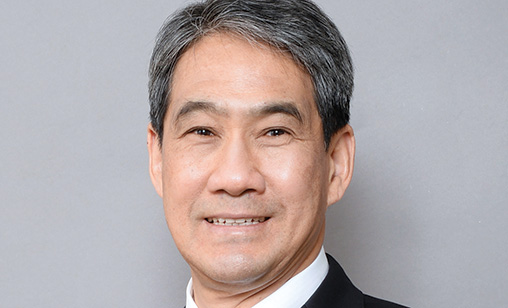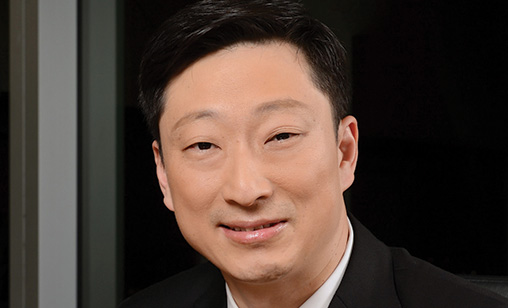News Backgrounder
Unbridled ambition
Hong Kong Airlines, which celebrated its 10th anniversary last month, aims to topple Cathay Pacific and Cathay Dragon from their positions as Hong Kong’ best full service carriers. It is an enormous challenge for the Mainland-owned airline, but as two of its leaders told Orient Aviation, launching international routes and leasing A350 aircraft will take them closer to their goal.
December 1st 2016
China-controlled Hong Kong Airlines (HX) has had more than its share of critical headlines since it launched a decade ago. Read More » It has been criticized for its below par on-ground and cabin crew service and lambasted for its poor on time performance, cancelled flights and unsettling safety incidents.
It also has attracted attention from analysts who question its financial viability and its seemingly unlimited sources of funding. It has an opaque fiscal profile that has not been helped by the airline’s cancellation of three initial public offerings (IPO) in the last four years, including a dual currency listing planned for March last year in Hong Kong.
 |
| 'Is Hong Kong Airlines profitable? “Yes, of course, otherwise how are we going to celebrate our 10th anniversary? Not with a big margin. We also have to keep our shareholder happy' |
| Tang king-shing Hong Kong Airlines vice chairman and executive director of the board |
The subsidiary of the Mainland property, hospitality and aviation conglomerate, HNA Group, attracted more headlines in September when it was announced that a former police commissioner of Hong Kong, Tang King-shing, who retired from the force’s top job in 2011, had been appointed vice chairman of the carrier and executive director of the airline’s board.
Tang, who is a Hong Kong delegate to the Mainland advisory body, the Chinese People’s Political Consultative Conference (CPPCC), told Orient Aviation last month that his job is to oversee the airline’s development strategies and corporate governance, legal affairs and audits, security, safety and customer relations.
It’s a big role to fill, especially as Tang’s only airport and airline experience has been his time as airport police chief at Hong Kong’s former international airport at Kai Tak and then as district commander of southern Kowloon where the former airport was located.
Tang is not fazed by the criticisms and said he was brought on board to support a carrier in growth mode. At press time, HX had a 36 city network. It launched seven destinations in 2015 and added 11 this year, including Hong Kong to Cairns, Australia’s Gold Coast and Auckland. Seoul will join the network this month. It has 11 A320s, 18 A330s and five A330 freighters.
When the carrier begins flying A350-900 wide body jets next year, it will set about developing a global network. “The key words are gradual and progressive. If we work out, from a business point of view, that yes this is the place to go then we will go. Unfortunately, all these issues take time,” he said.
HX’s chief operating officer, Ben Wong, said: “We have at least three or four A350s coming next year.” The carrier has ordered 15 A350s, for delivery from 2018, but it wants the type to join the fleet earlier, so it has gone to the market to seek leases for six more. “We have secured three, but there will be around six of the leased ones coming from next year. By the end of 2018, we will have more than 50 aircraft, mainly wide bodies,” Wong said.
“Our plan is to cover areas in North America, including Vancouver, which is a destination we are focusing on now. Ideally, we would like to provide that service by the middle of next year, but nothing has been 100% confirmed.”
The airline’s first service to U.S. territory started in mid-year, with flights to the Pacific island of Saipan. Tang declined to name the U.S. cities on the carrier’s radar, but said the A350s would open up Los Angeles, San Francisco, Honolulu and New York as possible destinations.
“We are growing very fast. For 10 years we have been operating regionally. But we are situated in Hong Kong, which is an international hub with geographic benefits. So we consider we have to be ready for our ultra-long-haul routes. It’s the reason we have prepared the way using code-share and interline arrangements. So far, we have signed 11 code-share agreements and 69 interline agreements,” said Wong.
 |
| 'The carrier has ordered 15 A350s, for delivery from 2018, but it wants the type to join the fleet earlier, so we have gone to the market to seek leases for six more. We have secured three, but there will be around six of the leased ones coming from next year. By the end of 2018, we will have more than 50 aircraft, mainly wide bodies' |
| Ben Wong Hong Kong Airlines COO |
One of these partnerships, forged in 2014 and extended last month, is with Etihad Airways. Under the expanded agreement, HX has placed its code on Etihad Airways flights between Abu Dhabi and Paris, Dusseldorf, Frankfurt, Manchester, Milan, Munich, New York and Zurich. Etihad has placed its ‘EY’ code on HX’s scheduled flights between Hong Kong and Auckland.
“As an expanding company with a base in a major international aviation hub, we would like to see our presence grow by gradual expansion to North America and European destinations. How and where we will be flying has not been decided,” he said.
In the last decade, HX has carried more than 26.5 million passengers. It has 10% of the market in Hong Kong. Its cargo penetration, at one of the world’s biggest air freight hubs, is 6.7%.
Facing competition from both the best full service carriers and several LCCs out of Hong Kong, HX is attempting to add differentiation to its passenger experience. “If you travel on HX on your birthday, we give you with a free pass to our VIP lounge with another passenger of your own choice, even if you have an economy class ticket,” said Wong.
There also is a mobile app designed to give continual assistance to passengers with 24/7 staff available to resolve passenger problems. On board, dedicated cabin crew look after and play with children.
In a major development, HX is moving 90% of its flights to the year-old midfield concourse (MFC) at Hong Kong International Airport. HX said 99% of its passengers board their flights via air bridges at the MFC, which has improved the airline’s on-time performance.
A new VIP lounge, which is double the size of the current one in the main terminal, is being built at the MFC and will open in the first quarter of next year.
Like all airlines operating in Hong Kong, HX faces congestion and slot issues. Wong said everyone at Hong Kong airport, at the airlines and at the relevant authorities is working to solve the problem.
“The third runway is coming and should be in place by 2023. By then, the infrastructure issues, hopefully, will be finally resolved,” he said.
“The Mainland and Chinese governments “are opening up new routes, particularly from Shanghai to Hong Kong, over the sea rather than inland. That will greatly alleviate the pressure of the airways congestion, particularly in the Shanghai area. We are working with the governments to see whether similar approach can be made for other areas,” said Wong.
Some of HX’s operations have been questioned by observers. The CAPA consultancy suggested in a recent report that its operations are increasingly overlapping with budget airline, HK Express, which also is ultimately owned by HNA Group.
It said its roles are undefined and uncoordinated and there is a risk the two carriers will compete with each other rather than combining their different propositions to address multiple segments of the markets.
Wong said: “on the face of it, the observation appears correct, but the observation is not correct. HK Express is an LCC whereas HX is providing full airline service to our passengers. So some overlapping of our destinations is not really much of a problem.
“First of all, the fare base is different. With the service we are providing we are much more comprehensive than HK Express,” said Wong. Indeed, HX argues this applies to all competing budget operators.
China is critical to HX’s strategy. It needs to soak up Chinese travelers and feed them through Hong Kong to the rest of the world. “Again, our overall strategy is to take advantage of Hong Kong’s location as an international aviation hub,” said the COO.
“We fully understand that Hong Kong, with just over seven million people, is not adequate from a business point of view. But if you look at Canton, we are talking about a population of 57 million, which is a big number compared with our own population. Add to that the business growth and industrial activity in Southeast Asia and you can understand our strategy.”
HX is expanding its Chinese network, including to second and third tier cities in western China that will provide passenger feed for its regional and planned international network. “We need both, not only regional. We have built regional as a foundation and will progressively extend to longer-haul international,” he said.
Is HX profitable? “Yes, of course, otherwise how are we going to celebrate our 10th anniversary,” said Tang. “Not with a big margin. We also have to keep our shareholder happy.”